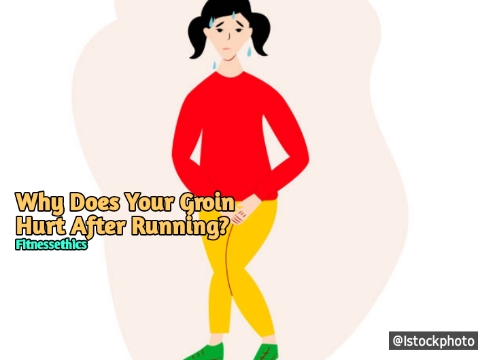Is It Normal for Your Groin to Hurt After Running?
Running is a fantastic form of exercise that offers numerous health benefits, from improving cardiovascular fitness to boosting mood. However, if you’ve ever experienced groin pain after a run, you may be wondering if it’s normal or a cause for concern.
Groin pain after running is a relatively common occurrence and can stem from various factors. It’s crucial to understand the underlying causes and differentiate between normal discomfort and potential injuries. In most cases, mild groin pain after running can be attributed to muscle soreness and fatigue, which should resolve on its own with adequate rest and recovery.
However, persistent or severe groin pain should not be ignored, as it could indicate a more serious issue such as a strain or tear in the muscles, tendons, or ligaments of the groin area. If you experience sharp or shooting pain, swelling, or difficulty walking, it’s advisable to consult a healthcare professional for a proper diagnosis and treatment.
Why Does My Groin Hurt After Running?
There are several reasons why your groin might hurt after running. Let’s explore some of the common causes:
Muscle Strain
The adductor muscles, located in the inner thigh and responsible for bringing the legs together, can become strained during running. This strain often occurs when you increase your running intensity or mileage too quickly, leading to overuse and fatigue.
Hip Flexor Tightness
The hip flexors, a group of muscles that help lift the legs during running, can become tight and inflamed, leading to groin pain. Tight hip flexors can be caused by factors such as prolonged sitting, inadequate warm-up, or poor running form.
Sports Hernia
Also known as athletic pubalgia, a sports hernia is a painful condition characterized by a tear or strain in the soft tissues of the groin area. It is often caused by repetitive twisting and turning motions during running and can lead to persistent groin pain.
Osteitis Pubis
Osteitis pubis is an inflammation of the pubic bone, which can result from overuse or repetitive stress on the pelvic region. Runners who engage in high-impact activities or have poor biomechanics may be more prone to developing this condition.
Inguinal Hernia
Although relatively rare, an inguinal hernia can cause groin pain after running. It occurs when a part of the intestine or abdominal tissue protrudes through a weak spot in the abdominal wall. Inguinal hernias typically require medical attention and may require surgical repair.
How Do I Stop My Groin from Hurting When I Run?
If you’re experiencing groin pain after running, there are several steps you can take to alleviate discomfort and prevent further injury:
Rest and Recovery
Allow your body enough time to rest and recover between runs. Avoid pushing through severe pain and give yourself ample time to heal. Incorporate low-impact activities such as swimming or cycling to maintain cardiovascular fitness while reducing stress on the groin muscles.
Ice and Compression
Applying ice to the affected area for 15-20 minutes several times a day can help reduce inflammation and alleviate pain. Using compression garments or wraps can also provide support and promote healing.
Stretching and Strengthening
Incorporate gentle stretching exercises for the hip flexors and adductor muscles into your warm-up and cool-down routine. Strengthening these muscles through targeted exercises can help prevent future groin injuries.
Gradual Progression
Avoid sudden increases in running intensity or mileage. Gradually progress your training to allow your body to adapt and minimize the risk of strain and overuse injuries. Follow a structured training plan that includes rest days and gradual increments in distance or intensity.
Proper Running Form
Pay attention to your running technique. Maintain good posture, engage your core muscles, and ensure proper foot strike and stride length. Avoid excessive twisting or sudden changes in direction that can strain the groin muscles.
Cross-Training
Incorporate cross-training activities into your routine to strengthen different muscle groups and reduce the repetitive stress on the groin area. Activities such as strength training, yoga, and Pilates can help improve overall body strength and flexibility.
Professional Assessment
If your groin pain persists or worsens despite rest and self-care measures, it’s advisable to seek professional evaluation. A healthcare provider, such as a sports medicine physician or physical therapist, can assess your condition, provide a proper diagnosis, and recommend specific treatment options.
Remember, each individual is unique, and the underlying cause of groin pain may vary. It’s essential to listen to your body, seek appropriate medical advice when necessary, and make adjustments to your training routine as needed. Don’t ignore persistent pain or attempt to self-diagnose serious conditions.
Conclusion
Experiencing groin pain after running can be a common occurrence, often attributed to muscle fatigue and overuse. However, it’s crucial to differentiate between normal discomfort and potential injuries. By following proper training techniques, incorporating adequate rest and recovery, and seeking professional guidance when needed, you can minimize the risk of groin pain and enjoy a healthy and injury-free running experience.
[starbox]


